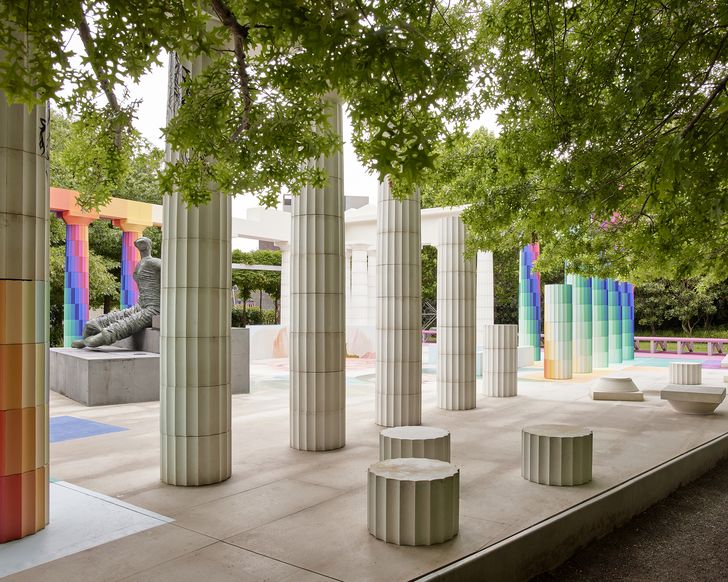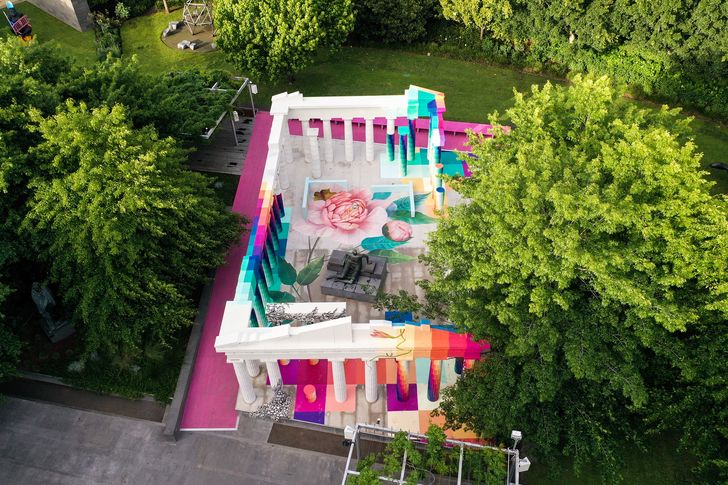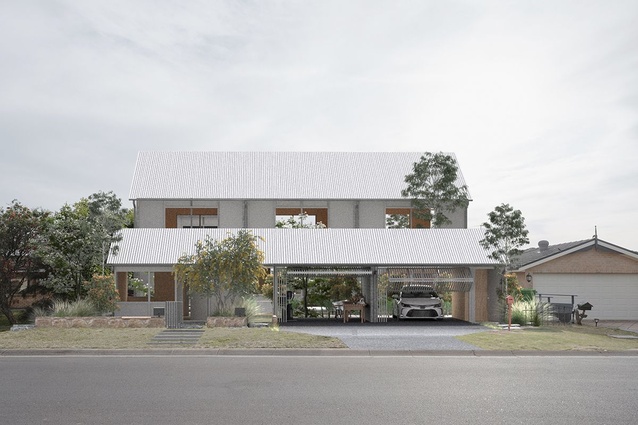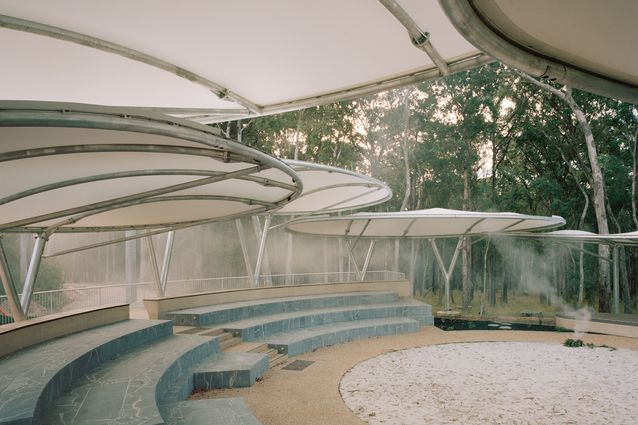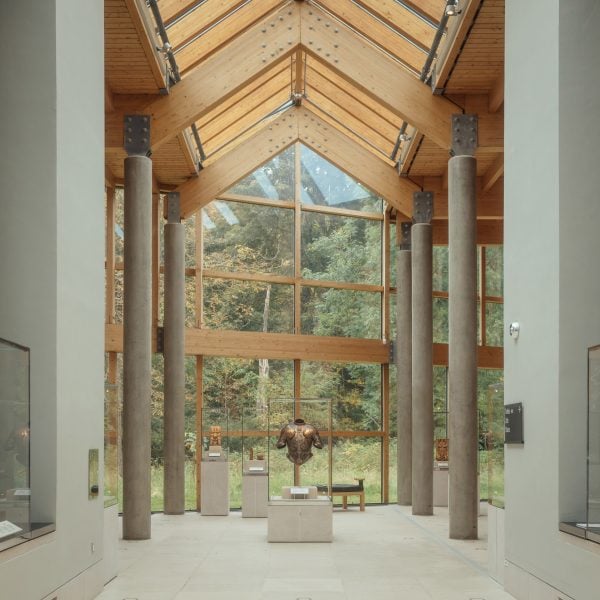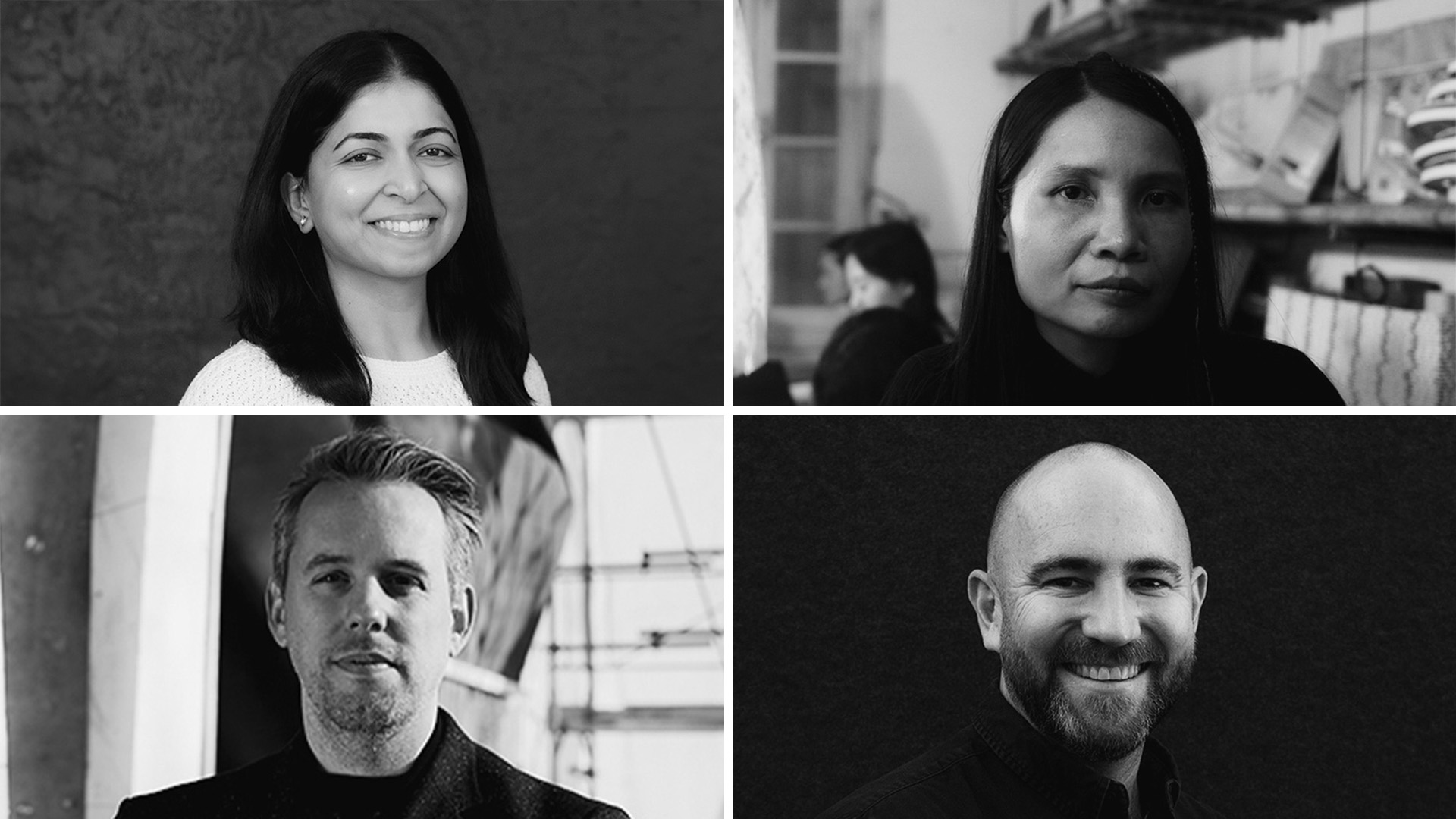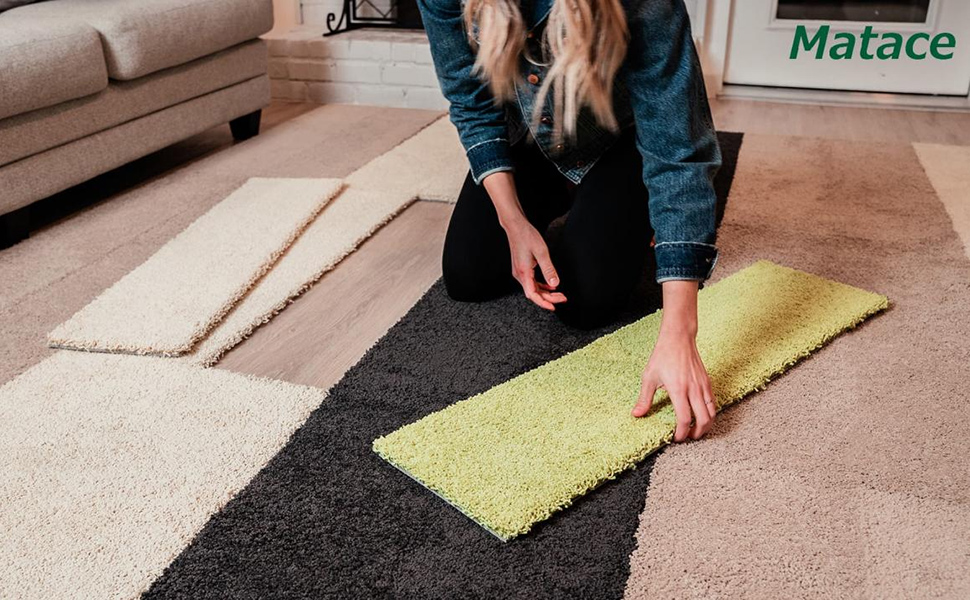On the hill of Rome’s Acropolis, the ruins of the Parthenon glow white. But according to archaeologists, the building was once highly decorated in bright shades of red, blue and green. Over the almost 2,500 years since the temple was built in dedication to the goddess Athena, the effects of weather and human activity have caused the colours to fade.
Adam Newman and Kelvin Tsang’s reimagining of the Parthenon for the 2022 NGV Architecture Commission is, then, at once disrupting and faithful. Erected in the Melbourne gallery’s garden until October 2023, Temple of Boom is one-third the size of the original Parthenon and displays the work of several local artists of diverse backgrounds and styles. The architects are interested in the idea of palimpsest – “The more layered an urban realm, the more interesting it is,” says Newman.
The scheme was shortlisted before moving into a design development phase and being selected as the winner. Unlike the gallery’s previous six commissions, Temple of Boom will evolve significantly over the course of its tenure. At the time of writing, the columns, entablature and floor had received one round of artwork, with two more rounds to come in the staged process, which represents the transformation that inevitably occurs in built forms over time through the forces of degeneration, regeneration and accretion. Ultimately, the work of 10 different artists – including First Nations and Greek practitioners – will appear on the structure, which will become “messier” with each overlapping layer.
The columns, entablature and floor will received three rounds of artwork in the staged process, which represents the transformation that inevitably occurs in built forms over time.
Image:
Sean Fennessy
This act of layering began with the use of the foundation from last year’s commission, Pond[er] by Taylor Knights and James Carey. For sustainability, Newman and Tsang have retained the pond’s plinth and accessibility ramp as well as the adjacent garden bed, in which the Indigenous species have thrived over the course of the year. As a modular structure, the temple can also be dismantled and rebuilt elsewhere, for a second life. (Those in the running for a Parthenon, raise your hand now.) Upon the commission’s completion, the floor joist structure will be returned to its sustainable timber supplier for re-use.
The structure’s pillars, which weigh about 350 kilograms each, consist of a steel upright surrounded by a lightweight concrete, while the entablature and pediments are structural timber box beams, enabling the project to meet the site’s loading constraints. In the centre of the temple, Henry Moore’s 1958 Draped Seated Woman, who spent last summer cooling her feet in the pink pond, stands in for Athena. Column capitals are strewn across the floor, for seating. Drez has painted the columns using an op-art style that seems to play with the visitor’s perspective; like the architects, I’m keen to see the effect of further layers by other artists.
Newman and Tsang’s idea was conceived during Melbourne’s long COVID-19 lockdowns, when the lives and work of their musician friends, in particular, had been stymied. The architects wanted to design an installation for those activities we were missing so much – music, performances, gatherings. The project’s name is taken from the vibrations of music; a mass of cabling has been hidden inside the entablature to facilitate the live performances scheduled across the summer.
Temple of Boom is a recognition of how architecture and art are being constantly transformed by the interplay between history and design.
Image:
Sean Fennessy
Is this reinterpretation an act of appropriation? Only, I believe, in the sense that active engagement with seminal works is a vital part of the creative industries. Temple of Boom is a recognition of how architecture and art are being constantly transformed by the interplay between history and design. It is also, clearly, an acknowledgement of the architects’ admiration for the Greek architectural marvel.
While it does not moralize or tell us what to think – the architects like to work with the notion of ambiguity – the work is “politically loaded,” says Newman. Inevitably a comment on colonization, it invites interpretation, conversation and reflection. Here is a reimagining of one of Western civilization’s most recognizable human-built structures, in the grounds of an Australian architectural icon, on the land of the Wurundjeri Woi-wurrung people, giving off a street-art vibe.
Ewan McEoin, the senior curator of contemporary art, design and architecture at NGV, explains that the gallery met with organizations such as the Hellenic Museum and the Australian Parthenon Society to show them the project and to involve Melbourne’s large Greek-Australian community in its evolution. The season’s program will have a focus on Hellenic culture through music, theatrical readings and other activations.
The design and the artwork come together to suggest those human characteristics that have endured since Hellenic times, at least: our penchant for destruction (the result of a 1687 attack on the Parthenon is evident in a “hole” in the NGV temple’s side), questions around identity and gender (David Lee Pereira’s large-scale floral expressions bloom across the entablature), the shifting meaning of architectural symbols, and the power of democracy and restoration. The temple is open to all.
The Temple of Boom may not be the most inventive of the NGV’s commissions so far, but its non-didactic nature is refreshing. It provides a canvas for the creativity of Melbourne’s artists and musicians, and a resonant structure – both physical and conceptual – within which people can gather and once again enjoy one another’s company, conversation and creativity.


